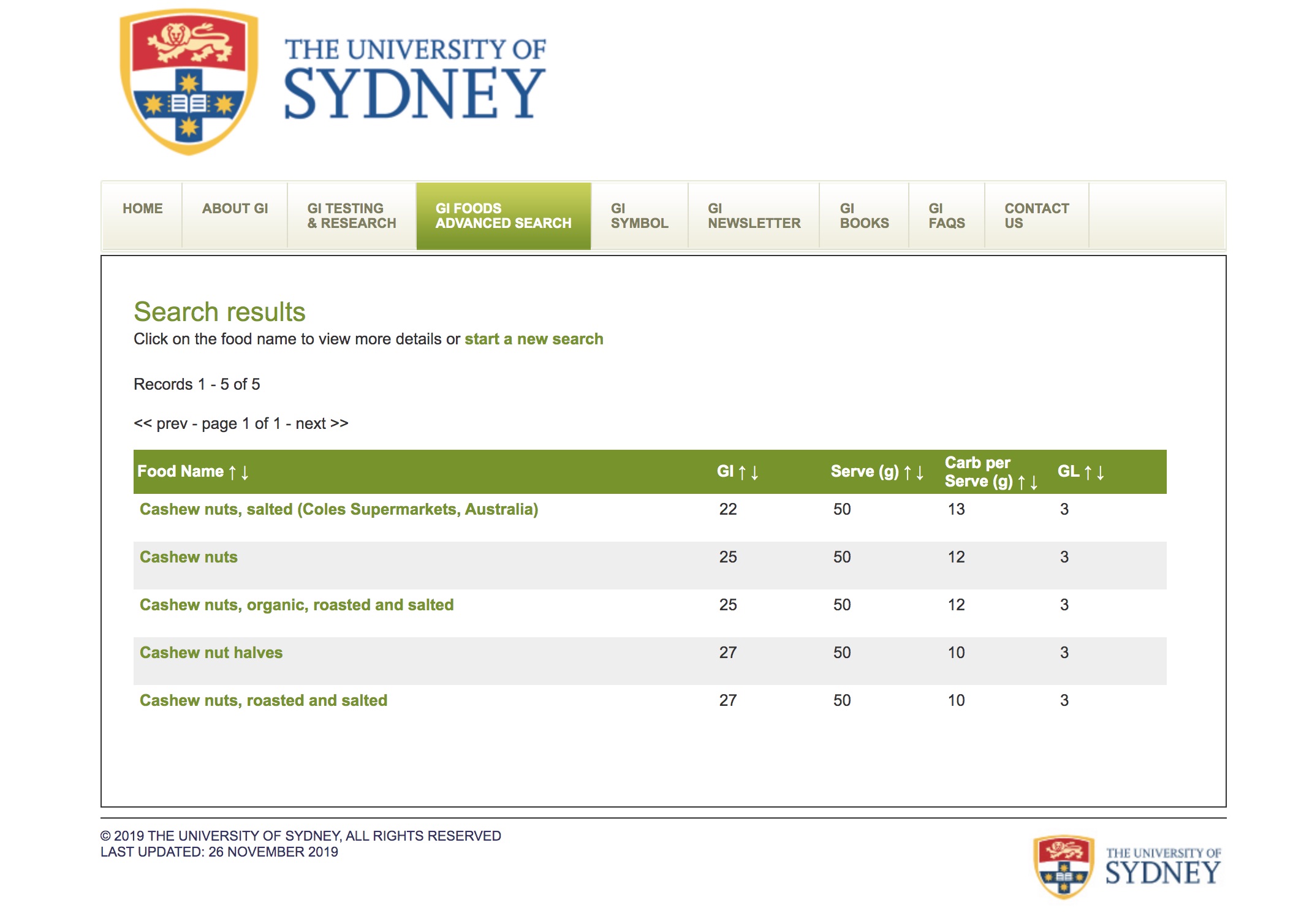- Home
- Blog
- Healthy Eating for Wellness
- Q. Are cashew nuts as good for us as walnuts and almonds - I never see them listed in the 'good' nuts to eat?
Q. Are cashew nuts as good for us as walnuts and almonds - I never see them listed in the 'good' nuts to eat?
Written by Catherine Saxelby
on Wednesday, 15 January 2014.
Tagged: healthy eating, healthy snacks, nuts, salt, snacks, vitamins

A. Cashew nuts are nutritionally much the same as other nuts: all nuts are high in fat (50 percent or more), and are rich in vitamin E and fibre, as well as being a good source of minerals, particularly magnesium and zinc.
While high in fat, all nuts rank highly for their healthy unsaturated fats.
Cashew nuts differ a little by being slightly higher in saturated fat - around 8 percent - than other nuts like almonds and walnuts which are around 4 percent. Macadamias have a high of 10 per cent, according to the Nuts for Life website.
This may be the reason you don’t see them listed as the best type to eat. Yet, if you had to choose between a fast food snack and a small handful of unsalted cashew nuts, I would go for the nuts every time. A 30g serve is around 15 nuts.
According to the Nuts for Life website, eating cashews can result in
- Reductions in total and LDL cholesterol [1]; and in insulin and LDL: HDL cholesterol ratio [2].
- Decreases in systolic blood pressure and increases in HDL-cholesterol in patients with type 2 diabetes [3].
The salted, roasted versions aren’t as healthy as raw cashews but certainly are very crunchy and delicious to eat. In fact, I should point out that 'raw' cashews aren't really raw.
According the University of Sydney GI Database, cashews are also low GI - which is what you want in a snack.

How cashews are processed
Cashews are actually seeds that grow at the base of cashew apples.

In the shell of the cashew is an oil known as Cashew Nutshell Liquid (CNSL), which contains the highly irritant and toxic anacardic acid which can cause blisters, rashes and burning sensations. People who work in cashew facilities quite often end up with allergies because of the amount of CNSL they come into contact with in the course of their jobs.
The cashew kernel comes in a very hard shell that cannot be cracked by hand so to soften the shell for removal, and to remove the irritant oil, cashews in their shells are boiled or steamed and then dried. They are then cracked one at a time (highly labour intensive) using a mechanical hand cracker to ensure the cashew kernel remains intact.
Finally, the testa or skin of the raw cashew is removed leaving the creamy white nut we are all familiar with. When dry or oil roasted, the cashew turns a golden yellow colour. It’s also possible to buy dry roasted cashews with the skin still on.
Growing cashews in Australia
Australia has a small cashew industry. They are grown near Dimboola on the Atherton Tablelands in northern Queensland and at Wildman river near Darwin in the Northern Territory.
In Australia, cashews are harvested in October, November and December and the 70,000 trees should produce in excess of 150 tonnes of cashews. All Australian cashews are sent overseas for hand processing.
Australians love cashews and most of the cashews we eat are imported from Vietnam and India. Brazil and South Africa are also big producers of cashews.
Thanks to Nuts for Life for information on the Australian cashew crop.
References
- Mah, E., et al., Cashew consumption reduces total and LDL cholesterol: a randomized, crossover, controlled-feeding trial. Am J Clin Nutr, 2017. 105(5): p. 1070-1078.
- Darvish Damavandi, R., et al., Effects of Daily Consumption of Cashews on Oxidative Stress and Atherogenic Indices in Patients with Type 2 Diabetes: A Randomized, Controlled-Feeding Trial. Int J Endocrinol Metab, 2019. 17(1): p. e70744.
- Mohan, V., et al., Cashew Nut Consumption Increases HDL Cholesterol and Reduces Systolic Blood Pressure in Asian Indians with Type 2 Diabetes: A 12-Week Randomized Controlled Trial. J Nutr, 2018. 148(1): p. 63-69.
Editor’s note: This article was updated and more recent information added in August 2020. Catherine Saxelby aims to keep busy women up-to-date with the latest information on nutrition and healthy eating.
Foodwatch
The Good Stuff
The Boring Stuff
© 2025 Foodwatch Australia. All rights reserved
Website by Joomstore eCommerce





